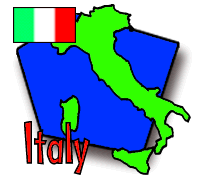Person of the Day: the Roman gods
- Jupiter, or Jove (the counterpart to Zeus): ruler of the gods, son of the god Saturn (whom he overthrew), worshipped as god of rain, thunder, and lightning, as the protector of Rome, as the guardian of law, defender of truth, and protector of justice and virtue
- Juno (the counterpart of Hera): queen of the gods, wife and sister of Jupiter, protector of women (especially those in childbirth), and special counselor and protector of the Roman state
- Vulcan (the counterpart of Hephaestus): god of fire and metalwork
- Minerva (the counterpart of Athena): goddess of handicrafts, patron of the arts and trades
- Apollo (the same as the Greek Apollo): god of agriculture, light (the sun), truth, poetry, music, and prophesy; special protector of young men; taught humans the art of healing
- Diana (the counterpart of Artemis): goddess of the moon and of the hunt, guardian of springs and streams and the protector of wild animals
- Mars (the counterpart of Ares): god of war, father of the Roman people because he was the father of Romulus (the legendary founder of Rome)
- Venus (the counterpart of Aphrodite): goddess of gardens, fields, love and beauty, bringer of good fortune and victory, protector of feminine chastity
- Vesta (the counterpart of Hestia): goddess of the hearth
- Neptune (the counterpart of Poseidon): god of the sea
- Ceres (the counterpart of Demeter): goddess of agriculture
- Pluto (the counterpart of Hades): god of the dead
- Bacchus (the counterpart of Dionysus): god of wine and vegetation
- Juno (the counterpart of Hera): queen of the gods, wife and sister of Jupiter, protector of women (especially those in childbirth), and special counselor and protector of the Roman state
Place of the Day: Amalfi Coast (Costiera Amalfitana) and the city of Amalfi
Tech Fact of the Day: the invention of the compass
Group Dispatch, May 11-12

Questions? Ask Ethan ![]() !
!
Return to Fast Facts
 |
 |
 |
 |
 |
|
Itinerary/ Journal |
Discussions |
About Italy |
eDscape Projects |
Scrapbook |
|
|
|
|
|
| Internet access in Italy was provided by ITNet. Internet access in the Trieste region of Italy and hosting for the Italian version of this site have been provided by Spin. |
Copyright 1997-99 BikeAbout. All rights reserved.
